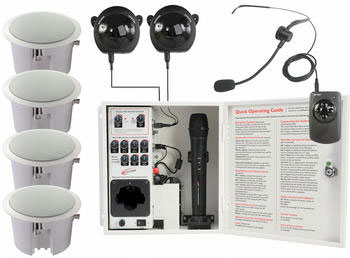Do You Know a PA From a Distributed Power System?

PA systems are usually sort of self-contained, the speakers and amplifier going together as set. So the electronics are well suited for each of the components. Plus you only have (usually) 2 speakers on one system.
A distributed power system is what is commonly used in super markets, hotels, office intercoms, etc. The main difference between a PA and a distributed power system is that the latter has special electronics built in to the speakers, like transformers, and special amplifiers are used to power the speakers properly. The speakers’ onboard electronics distribute the power from the amplifier evenly and safely. That allows several speakers to be chained together with a minimum of worry that any of them will “blow.”
Click here for the full article on distributed power systems from B&H.
